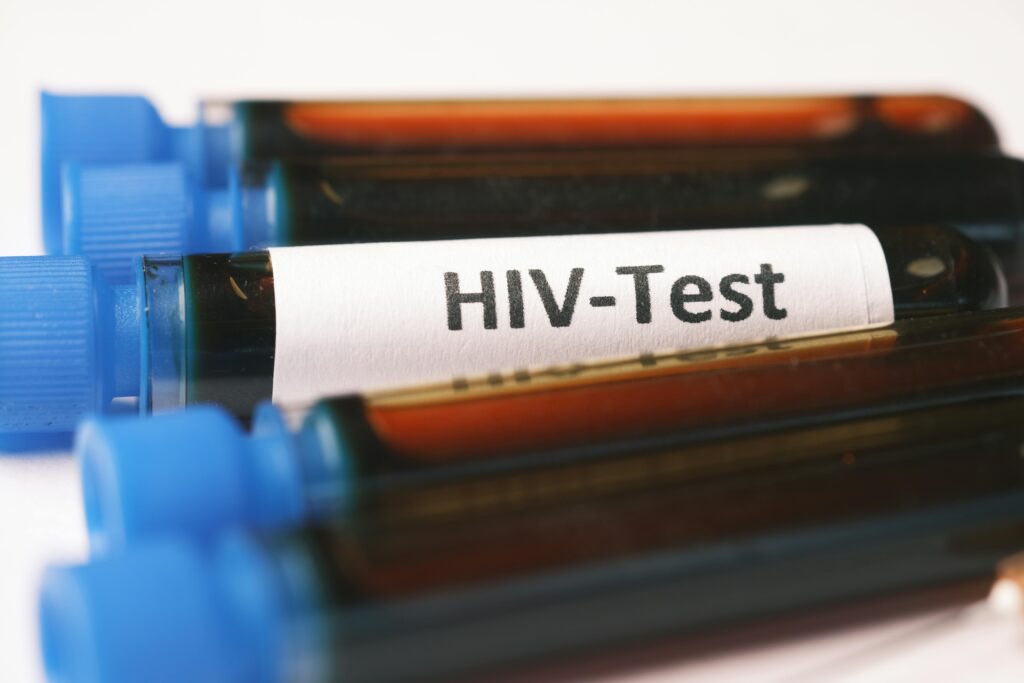For decades, the global fight against HIV has been a complex journey of scientific innovation and societal challenges. Despite remarkable strides, millions of new infections are reported each year, keeping the epidemic far from eradication. But what if there was a single breakthrough that could shift the narrative—a solution so effective that it could redefine prevention on a global scale?
A new drug has emerged, capturing the attention of scientists and advocacy groups alike for its potential to revolutionize HIV prevention. Its promise has been hailed as a turning point, raising the question: Could this be the key to finally ending the epidemic?
How Lenacapavir Works
Lenacapavir, a groundbreaking new drug in the fight against HIV, belongs to a novel class of treatments known as capsid inhibitors. It targets the virus’s protective shell, the capsid protein, which plays a critical role in the HIV lifecycle. This drug works by binding to the interfaces between the HIV-1 viral capsid protein (p24) subunits in capsid hexamers, disrupting crucial steps of viral replication including the nuclear uptake of HIV-1 proviral DNA, virus assembly and release, and capsid core formation.
By stabilizing the capsid structure, lenacapavir effectively blocks the disassembly process that is necessary for viral DNA to enter the host cell’s nucleus. This inhibition prevents the integration of the viral genome into the host’s genome, a crucial step in the viral life cycle. Additionally, lenacapavir interferes with the assembly of new viral particles. This disruption leads to the production of defective viruses that are unable to infect new cells, further hindering the spread of HIV.
The development of lenacapavir was propelled by advanced structural studies of the HIV capsid, which identified key potential sites for therapeutic intervention. By precisely targeting these critical areas, lenacapavir offers a highly effective means to suppress HIV replication. This makes it a valuable treatment option not only for patients who have experienced treatment failure but also for those seeking preventive measures like pre-exposure prophylaxis (PrEP).
According to Science, lenacapavir “interacts with the capsid proteins that form a protective cone around the viral RNA,” which is essential for the virus’s replication. This interaction underscores the drug’s innovative mechanism in disrupting the life cycle of HIV at multiple stages, marking it as a potential ‘Breakthrough of the Year’ and a hopeful contender in the quest to end the HIV epidemic.

Clinical Trial Success
Lenacapavir has demonstrated remarkable efficacy in preventing HIV infections across diverse populations through pivotal clinical trials.
The Phase 3 PURPOSE 1 trial evaluated lenacapavir’s effectiveness as a pre-exposure prophylaxis (PrEP) among cisgender women in sub-Saharan Africa. The interim analysis revealed zero HIV infections among participants receiving lenacapavir, indicating 100% efficacy. This led to the trial’s early unblinding due to meeting key efficacy endpoints.
PURPOSE 2, another Phase 3 trial, assessed lenacapavir’s efficacy among cisgender men, transgender men, transgender women, and gender non-binary individuals who have sex with partners assigned male at birth. Conducted across multiple countries, including Argentina, Brazil, Mexico, Peru, South Africa, Thailand, and the United States, the trial reported a 96% reduction in HIV infections compared to background incidence. Specifically, there were only two incident cases among 2,180 participants, corresponding to 99.9% of participants not acquiring HIV infection in the lenacapavir group.
In both trials, lenacapavir demonstrated superiority to daily oral PrEP options, such as Truvada. The convenience of a twice-yearly injection addresses adherence challenges associated with daily medications, potentially enhancing real-world effectiveness.
Advantages Over Daily PrEP
Lenacapavir offers significant benefits compared to traditional daily pre-exposure prophylaxis (PrEP) methods, addressing key challenges in HIV prevention.
Daily oral PrEP requires consistent daily intake, which can be hindered by factors such as forgetfulness, stigma, and lifestyle constraints. Lenacapavir, administered via a subcutaneous injection every six months, simplifies adherence by reducing dosing frequency. In the PURPOSE 2 trial, 91% of participants received timely injections, indicating high adherence levels.
Clinical trials have demonstrated lenacapavir’s superior efficacy over daily oral PrEP. The PURPOSE 2 study reported a 96% reduction in HIV infections among participants receiving lenacapavir compared to those on daily oral PrEP.
Daily PrEP pills can be associated with stigma, as their use may inadvertently disclose one’s HIV prevention efforts. Lenacapavir’s biannual injection offers a more discreet option, potentially reducing stigma and increasing acceptance among users.
The biannual administration of lenacapavir alleviates the daily burden of pill-taking, enhancing convenience for users. This is particularly beneficial for individuals with busy lifestyles or those who struggle with daily medication routines.

Global Impact Potential
Lenacapavir’s introduction marks a significant advancement in global HIV prevention efforts, particularly for high-risk populations. Its biannual injection schedule offers a practical and effective alternative to daily oral pre-exposure prophylaxis (PrEP), which has faced adherence challenges. The World Health Organization (WHO) acknowledges that lenacapavir can expand the toolkit for global HIV prevention, especially in regions with high HIV incidence.
The drug’s efficacy has been demonstrated in diverse populations. In the PURPOSE 1 trial, lenacapavir was 100% effective in preventing HIV among cisgender women in sub-Saharan Africa. Similarly, the PURPOSE 2 trial reported a 96% reduction in HIV infections among cisgender men, transgender men, transgender women, and gender non-binary individuals who have sex with partners assigned male at birth.
However, the global impact of lenacapavir will depend on its accessibility and affordability. Gilead Sciences, the manufacturer, has not yet announced a price for lenacapavir as a prevention method. As an HIV treatment in the United States, its cost was $42,250 per patient per year in 2023, whereas oral PrEP drugs can cost less than $4 a month.
To address these concerns, initiatives are underway to expand access. The Global Fund and the U.S. President’s Emergency Plan for AIDS Relief (PEPFAR) have announced plans to reach two million people with lenacapavir, contingent upon regulatory approvals.
The Cost Barrier
While lenacapavir presents a promising advancement in HIV prevention, its current pricing poses significant challenges to widespread accessibility, particularly in low- and middle-income countries.
In the United States, lenacapavir is approved for treating multi-drug-resistant HIV, with an annual cost exceeding $40,000 per patient.
Such high costs render lenacapavir inaccessible in regions with limited healthcare budgets. For instance, in countries like Uganda, where the annual healthcare expenditure per person is approximately $12, the current price of lenacapavir is prohibitively expensive.
Research indicates that lenacapavir could be mass-produced at a significantly lower cost. Studies suggest that, with economies of scale and generic manufacturing, the drug could be produced for as little as $41 to $94 per person per year.
To address these cost barriers, Gilead Sciences has entered into royalty-free licensing agreements with six generic manufacturers to produce and distribute lenacapavir in 120 low- and lower-middle-income countries. This initiative aims to enhance affordability and accessibility in regions heavily impacted by HIV.
Future Steps and Challenges
Lenacapavir’s journey from clinical trials to a globally accessible HIV prevention method involves several critical steps and potential obstacles.
- Regulatory Approvals: Gilead Sciences plans to submit data from the PURPOSE 1 and PURPOSE 2 trials to regulatory agencies worldwide, aiming for approvals that would authorize lenacapavir for HIV prevention across diverse populations. These submissions are expected to commence by the end of 2024.
- Manufacturing and Distribution: The production of lenacapavir, particularly its injectable form, is complex. Gilead has partnered with six generic manufacturers experienced in producing high-quality generic medicines for HIV and other infectious diseases to ensure efficient manufacturing and distribution.
- Healthcare Infrastructure: Administering lenacapavir requires healthcare systems capable of delivering biannual injections and maintaining patient follow-up. In resource-limited settings, strengthening healthcare infrastructure is essential to support the effective delivery of this preventive treatment.
- Community Engagement and Education: Addressing potential stigma and ensuring community acceptance are vital. Comprehensive education campaigns are necessary to inform communities about lenacapavir’s benefits and to encourage uptake among those at risk.
A Path Forward in the Fight Against HIV
The emergence of lenacapavir marks a pivotal moment in the global effort to combat HIV. Its groundbreaking efficacy, simplified administration, and potential to overcome the barriers of traditional prevention methods make it a beacon of hope for millions worldwide. However, the journey toward eradicating HIV is far from over.
Achieving widespread impact requires a collective effort to address the challenges of cost, accessibility, and infrastructure. Governments, advocacy groups, and healthcare providers must collaborate to ensure this innovative drug reaches the populations that need it most. Community education will also play a critical role in overcoming stigma and fostering trust in lenacapavir as a revolutionary prevention method.
While lenacapavir may not single-handedly end the HIV epidemic, it represents a transformative step forward. By significantly reducing new infections and offering a more convenient prevention option, it brings us closer to a world where HIV/AIDS no longer devastates communities. The success of lenacapavir could redefine the future of HIV prevention, offering hope for a healthier, more equitable tomorrow.


